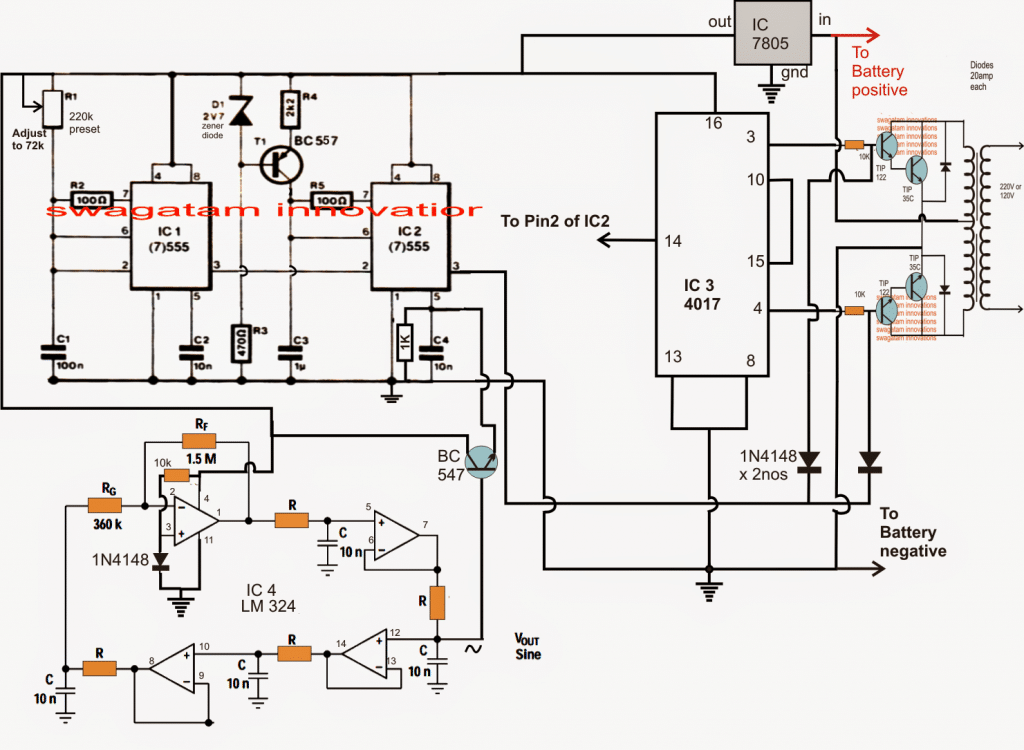This tutorial explains how to use a Bubba oscillator sine wave generator to create a basic sine wave inverter. A devoted reader of my site asked for the suggestion.
Fundamental Details
I'm an electrical engineering B.Tech student in my fourth year.
For the end of the semester, we are attempting to create a pure wave sine wave inverter utilizing PWM and a Bubba oscillator; additionally, a battery charging and auto cutoff circuit might be required.
Considering daily needs, we require the inverter to function. If you could provide a functional circuit for this, i would surely be very appreciative.
Many thanks!
Circuit Diagram

NOTE: For effective PWM transformation, consider a Darlingtton pair to power the BC547 connected to pin #5 of IC2.
The Circuit Layout
Below details will help you understand the suggested sine wave inverter utilizing a bubba oscillator:
With regard to the modulation input supplied at its pin 5, IC1 creates a square pulse generator for the PWMs, whereas IC2 creates a monostable PWM generator. The stage is made up of two 555 ICs that are set as PWM generators.
A bubba oscillator made with four opamps from the IC LM324 is used to achieve the sine wave modulation input at pin 5 of IC2.
The produced sine wave pulses are supplied to pin 5 of IC2 via a BJT common collector for additional analysis after being precisely set at 50 Hz.
The Basic Formula for 50 Hz
Using a particular formula, R has been accurately chosen for establishing the bubba oscillator's frequency at 50 Hz:
f = 1/2(3.14)RC
IC2 creates an analogous PWM waveform at pin 3 after comparing the square pulses at pin 2 with the sine wave modulations at pin 5.
Only one IC 4017, the outputs of which were suitably integrated with the two high gain, high current power BJT stages generated by Darlington TIP122 and TIP35, is used to setup the flip flop stage needed for power stage switching.
To accomplish a 50 HZ switching between the power transistors, pin 3 of IC1 is used to clock pin 14 of the 4017 at about 200 Hz.
Two 1N4148 diodes interconnected between the bases of the tIP122 are used to accomplish the PWM modulation of the aforementioned 50 Hz switching. These diodes are switched to correspond with the PWM from pin 3 of IC1.
The diagram that follows could be used to relate to the anticipated waveforms of the PWMs:
Bubba oscillator waveform

Leave a Reply